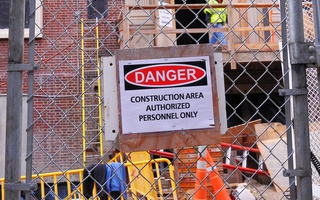The New Research Building at Harvard Medical School has been named one of the recipients of the annual Merit Award for Design Excellence from the New England Chapter of the American Institute of Architects (AIA).
The individual state chapters within the New England Chapter rotate annually to host the Design Awards Program, and this year the New Hampshire Chapter selected 11 recipients from 271 entries.
“[The award] signifies good design, [and] good sustainable features,” said Carolyn Isaak, the executive director of the New Hampshire Chapter. “The jurors spent a lot of time...to find the projects, and the significance is that they’ve done outstanding work and we’ve honored it.”
Other recipients of this year’s Merit Award include the Integrated Sciences Building at the University of Massachusetts in Amherst, Pierce Hall at Kenyon College in Ohio, and the Carl J. Shapiro Science Center at Brandeis University in Waltham, Mass.
The New Research Building, which opened on Sept. 24, 2003, covers 525,000 square feet and cost approximately $260 million to build, according to an article in The Harvard Gazette.
It began as a project between Harvard Medical School and Architectural Resources Cambridge (ARC), a national architectural design firm that specializes in institutional facilities.
Arthur Cohen, the founding principal of ARC, said the ARC “is very pleased to receive this prestigious award from the AIA.”
The building, located close to Boston Latin School in Longwood, accommodates the Medical School’s department of genetics and department of pathology.
“Essentially it was built so that the common areas intersect,” said HMS spokesperson David J. Cameron. “They want people to be overlapping and interacting with each other.”
He added that the New Research Building differs from typical research facilities that house rows of labs along corridors and structurally prohibit the workers from interacting.
Christian Panasuk, the director of sales and marketing at the Joseph B. Martin Conference Center located in the building said that the “beautiful” public space could easily be filled with research posters.
“The conference space open to the public is first rate, it’s awesome,” Panasuk said. “Architecturally, acoustically, and visually, it’s easy for people to concentrate for a very long time.”
Read more in News
Christakis’ Study To Survey Flu StudentsRecommended Articles
-
America Un-InventsWhile the patent system is failing in many areas, the America Invents Act (AIA), despite Obama’s glowing praise, does little to fix the most pertinent issues currently facing our country's process of protecting and tracking intellectual property.
-
 Renovation of Art Museum Moves Forward
Renovation of Art Museum Moves Forward -
Portrait of an Artist: Jesse A. Green and Michael WangTwo Harvard alums talk about their exhibitions in the Main Gallery of the Carptenter Center.
-
Mr. Yale, Tear Down This HallYale’s decidedly masturbatory “Architecture of Yale” web page confesses that “Connecticut Hall is in many ways a Harvard building.” Admitting there is a problem is an excellent first step.
-
Study Suggests Video Games Can Help the Blind NavigateA recent study from Harvard’s Laboratory for Visual Neuroplasticity at Massachusetts Eye and Ear Infirmary suggests that audio-based video games can help blind individuals to navigate physical spaces.
-
 HBS Dedicates New Home for Executive Education Program
HBS Dedicates New Home for Executive Education Program













